Foothill administrators are concerned this week about the number of juniors who have decided to opt out of the Smarter Balanced Assessment Consortium (SBAC) exam. For the first time in school history, more than a few students and their parents chose to exercise their right not to take a state-mandated standardized test.
As of mid-week, 17 students — 7 percent of the junior class — had gotten parent signatures and submitted paperwork to opt out; although some have since changed their minds after administrators spoke with them.
The SBAC tests students on math and English standards and is meant to evaluate critical thinking and problem solving. The pilot for the exam was taken by this year’s juniors last spring.
High stakes SBAC testing clashes with high stakes AP exams
Testing takes place over a week-long period and was scheduled from April 27 to May 1, falling directly before the two weeks of Advanced Placement (AP) exams. Juniors were pulled from their US History and English periods Monday through Friday to take the tests in the school computer labs or media center.
The scheduling of the SBAC prompted concern among some juniors at Foothill, Ventura and Buena high schools. When students learned early this week via texts, social media and word of mouth about their opt out right, allowed by Ed Code Section 60640, they moved to have their parents sign opt out forms, saying they wanted to use the time to study for AP exams.
Junior Melissa Carriger heard about the opt out form from her friend and decided to not take the SBAC because of the class time it would take away from US History.
“We would be getting out of AP US history, and the AP test is next week. I felt that I needed the time to study,” she said.
The number of students opting out caused concern for Foothill administration because in order for Foothill’s SBAC test scores to be counted towards its state ranking, 95 percent of students in the junior class must take it.
“Last year was just a pilot, no scores. This year, we’re going to get scores. We don’t know what form they’re going to look like. We’re hearing that they are going to be putting out proficiency rates comparing schools […] That makes it a little higher stakes,” Foothill principal Joe Bova said.
[soundcloud url=”https://api.soundcloud.com/tracks/203397098″ params=”color=ff5500&auto_play=false&hide_related=false&show_comments=true&show_user=true&show_reposts=false” width=”100%” height=”166″ iframe=”true” /]
In addition, a large amount of students pulling out of the test jeopardizes the district’s funding as a Title 1 school district, a provision to give schools with at least 35 percent of children living in low-income families additional funds appropriated for the use of improving academic achievements for disadvantaged students.
In order for funding to be received, the district must meet sufficient yearly progress goals, such as results from standardized tests like the SBAC.
In Seattle, more than 90 percent of the 11th graders at several high schools have opted out over the past two weeks.
Compromises are made in order to salvage test scores and convince students to opt back in
“The district is very concerned with […] the fact that if kids are waiving out, and we don’t have enough students to test and we don’t meet our annual yearly progress, what it would mean in terms of funding,” Bova said.
“In the past, […] if a kid decided for whatever religious reasons or whatever political reasons they didn’t want to take the test, and they filled out a waiver, that didn’t count against the school in terms of participation rate. Now, because the federal government doesn’t acknowledge that, any kid that signs a waiver does count against us as not testing.”
Approximately seven percent of the junior class had opted out of taking the test before Bova and assistant principals Ron Briggs and Lisa Harvill became involved. On Wednesday and Thursday, Bova met with students to discuss the situation and ask for a compromise.
“I’ve had some really good conversations with a couple of kids this morning. I think that that’s why I’m trying to figure out a way and we kind of worked out a workable solution,” he said.
As a compromise, students who initially waived out of the test were given the option to take the test in two parts: the hour-long performance task this week and the second half of the test after AP tests.
Bova believes that another factor that contributed to the number of juniors initially opting out was the fact that they were the only grade taking the exam.
“It’s only one grade level too. It’s like ‘we’re the eleventh grade and we have to test again? And nobody else is testing,’ so that kind of plays into it too,” Bova said.
Most of the students Bova talked to have decided to take the compromise and ultimately will test.
AP English teacher Jennifer Kindred made an observation that of her two college prep classes, only one student had opted out, and of her three AP classes, several had opted out.
She said she believes religion may also be a reason for the increase in students opting out because some of the forms students used were from a religious-based political action website; the Pacific Justice League.
AP US History teacher Dan Fitz-Patrick believes that the decision to opt out of taking the exam is a misguided one, prompted more by a lack of knowledge about the implications of not taking the exam than selfishness.
“I think that juniors are opting out because they’re under the idea it doesn’t directly tie them to any particular score, and amongst the AP kids they, to a degree, have mistakenly kind-of underestimated it and maybe overestimated the AP exam,” he said.
US History and Government teacher Cherie Eulau said she believes that the decision to opt out of the exam is a hypocritical one, on both the students’ and parents’ part.
“I just think it’s hypocritical. It’s like, you’re not taking our test because you want to take another test,” she said. “So, it’s not really about the test. It’s about opportunity cost; you want to do something else with your time.”
“We do need those kids to take the test, and because they have never taken it before, they can’t truly be objecting to this test because they don’t know what it is and neither do their parents.”
Bova recognized the concerns of the AP students as “understandable,” but pointed out that CST testing and AP testing had always taken place in the same general time frame, recalling an instance when AP tests had taken place on the same day as CSTs.
Eulau also recalled the scheduling conflict that has always existed between state-mandated tests and the AP exams.
“I mean it is sort of a nightmare time of year, in the sense that you have always had the APs conflict with the CSTs and all these other tests,” Eulau.
The SBAC gains support from faculty members and dissent from students
The nature of the SBAC is different than the CST. Instead of focusing on correct multiple-choice answers, it requires written expression and focuses on the critical thinking and problem solving that go into coming to an answer.
Foothill teachers who have seen the test say they are pleased with it and believe that it is an improvement from the standardized tests before it.
“ I think in theory I like it. It’s much more rigorous than the CSTs, which I think is a good thing,” Kindred said.
Eulau said that although opting out had always been an option for parents and students, the frequent use of it didn’t begin until the implementation of the SBAC.
“It’s not an easy test. It requires higher level thinking and I was talking to my son who teaches in New York about this because New York is way ahead of us,” Eulau said. “They’ve been taking this test for several years, so they’re ahead of us and I was thinking, nobody was complaining when it was this very basic test that didn’t require higher level thinking.”
Junior Roan Moran was one of the students who did not opt back in after speaking to Bova.
“I don’t believe Common Core is an accurate portrayal of intelligence and with so many schools opting out already, it’s not an accurate portrayal of the school’s rating either,” he said.
Junior Whitney Tice opted out of the test for several reasons, but ultimately wishes that the federal government would find a better way to evaluate students than through the SBAC.
“I wish that Common Core testing was different,” she said. “Our nation could do a better job with how they test students and school standings, and stuff could be ranked on different things, because I don’t think anyone in school is really excited about taking the test and thinks they are a fair way of judging their academic abilities.”
Bova believes that the situation was “not good for everybody involved,” but that he expects the juniors of Foothill to do their best to represent their school.
“We would hope that our students would see the bigger picture and implications for the school and they would want to do whatever they can to their best and represent their school,” he said.
Photo Illustration Credit: Josh Ren/The Foothill Dragon Press






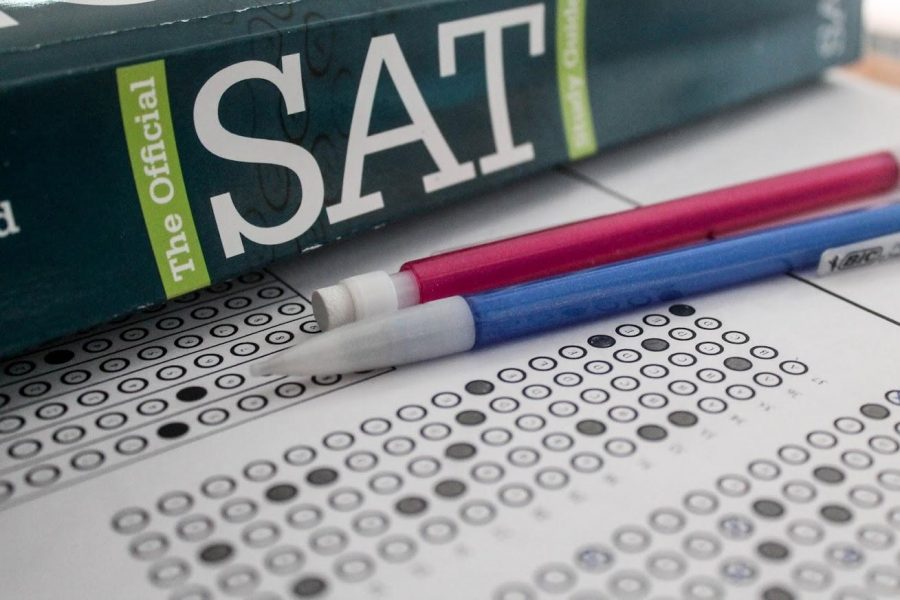
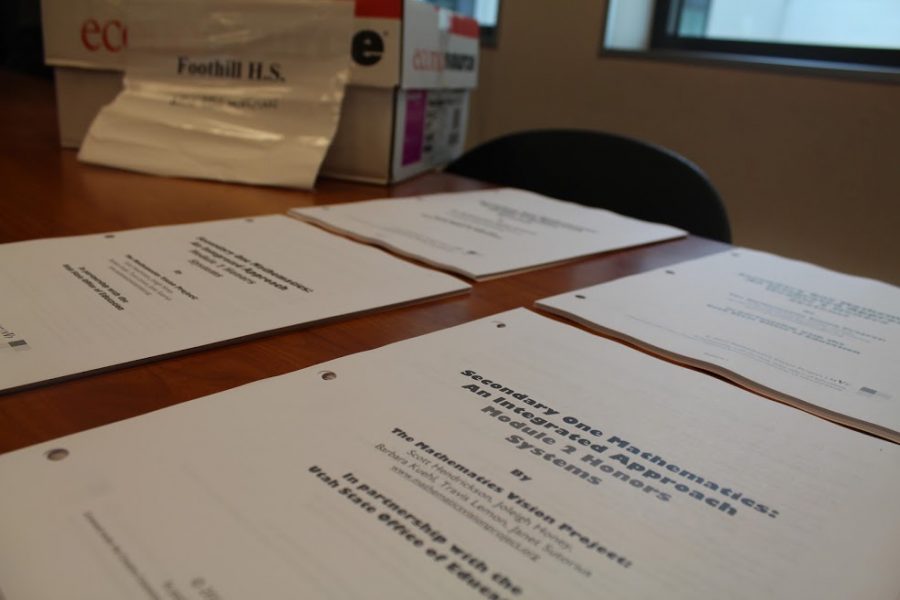


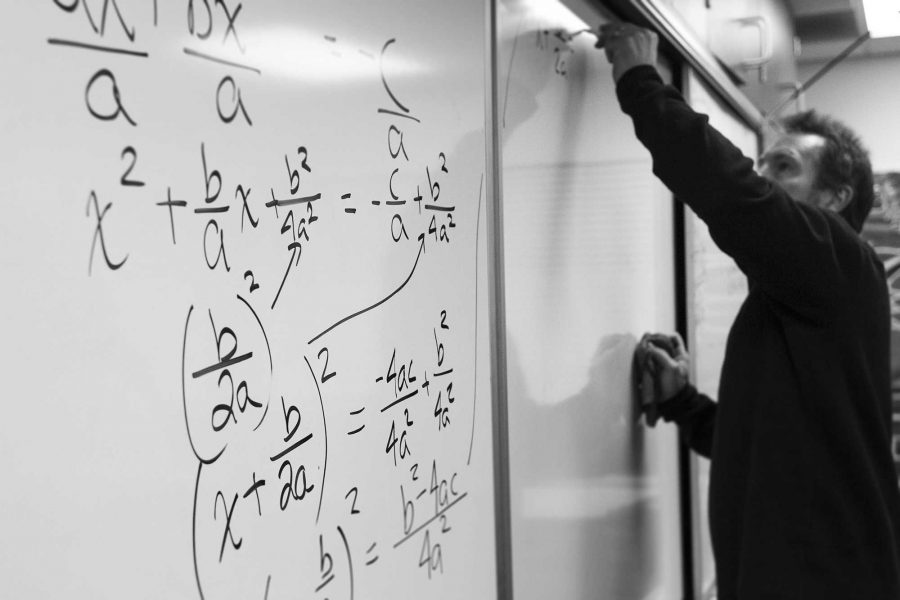

Former Student • May 4, 2015 at 11:28 am
I personally commend the students who have chosen to opt out of this draconian way of evaluating a public institutions effectiveness.
If more students were to take this stance maybe then we would see a change in the way funding is applied to our schools.
Additionally, I find it absolutely intrusive and a shame that the instructors would choose to allocate their time persuading students that have already chosen to opt out, rather than respecting their decision.
Mrs. Carr • May 1, 2015 at 8:28 am
Oops…that meant to read “OUR time”…
Mrs. Carr • May 1, 2015 at 8:26 am
I am so pleased with how hard our juniors are working as they go through this testing. The groups in D104 have been awesome all week. As a test administrator who gave up curricular time with my EDA, yearbook and Web design classes, I feel that the juniors in my lab are respecting OUR and doing their best to show what they can do on this test. Of course, I have concerns about the timing and process, but the type of thinking being requested on these tests is high level and I believe a better measure of learning. I hope that we use the next few years to adapt to this new style and that the results are not used punitively.